
You might know me as the barefoot shoe queen, but it wasn’t always like this. I’ve run the whole gamut of foot issues, orthotics, & supportive shoes and when Vibram Five Fingers were the rage I was clinging to my arch support. But after years of increasing foot problems, I swung the other way.
Here is my story of how I came to barefoot shoes as a solution to my chronic foot pain.
My Background with Foot Pain
Sometimes I am accused of having the “right genes” for barefoot shoes, but the reality is when it comes to physical performance I’m on the shallow end of the gene pool. You see I have a connective tissue disorder called hypermobility spectrum disorder, and that makes me the perfect candidate to NOT wear barefoot shoes.
I started having foot pain at the ripe age of 9. I developed painful ankle tendinitis for no apparent reason and was prescribed orthotics to correct my flat feet. While it did help with the tendinitis, it was around this time that I also developed chronic fatigue, headaches, and neck pain. I was your typical nerd – bookish, unathletic, sick often, and twiggy. But I was bright and had a happy disposition, so made it through life without too much trouble.
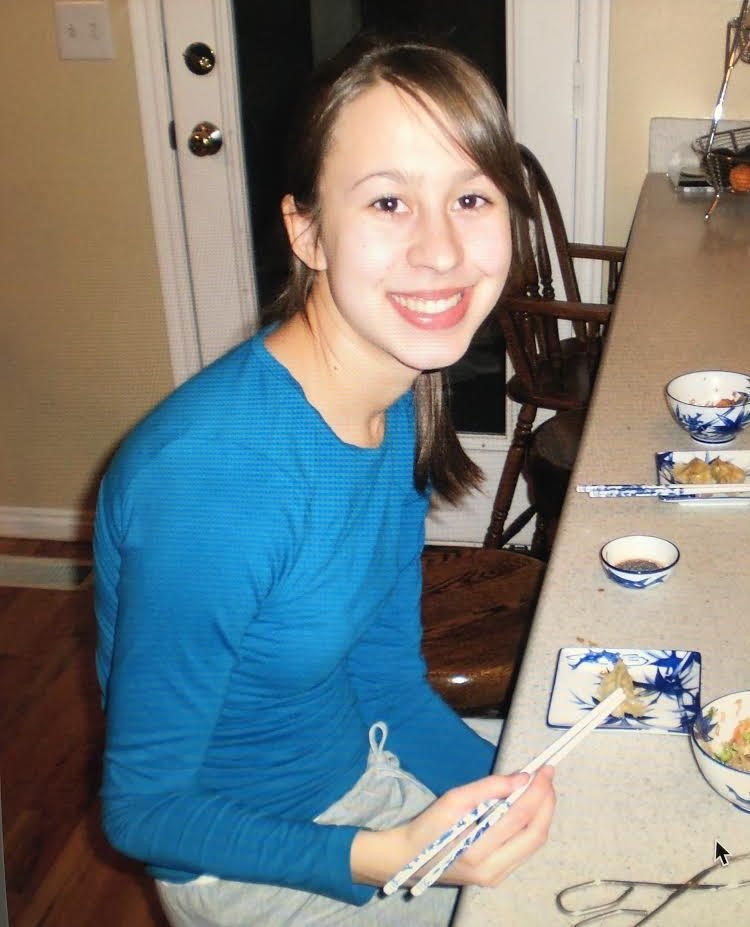
As I got older I found it harder and harder to move my body. I was prone to injuries and aches that never seemed to heal – an aching ankle, a swollen knee, a low back twinge, a persistent crick in my neck, etc. I often wondered what was wrong with me, but doctors assured me that everyone is tired and achy and my ailments were common and minor.
And so it went on like this, with the pain slowly creeping up on me. It wasn’t until I was pregnant with my second child that it moved in permanently.
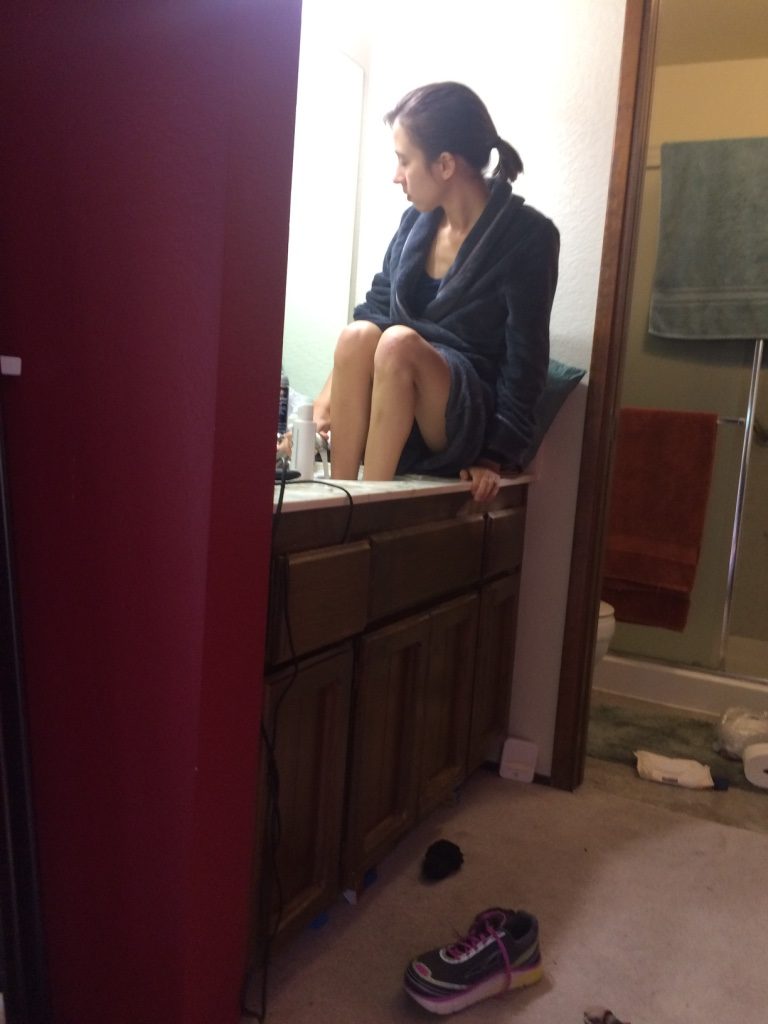
What before had been an intermittent annoyance was now a constant disruptor to my life. And the biggest source of pain was my right big toe. I found shoes intolerable because they all irritated my big toe, but walking without shoes was also unbearable. I hobbled around until son #2 was born and then headed to the podiatrist for a diagnosis.
Diagnosis: Your Feet Are F***ed
The diagnosis was essentially “Your feet are f***ed and you need to wear orthotics and stiff orthopedic shoes every day the rest of your life.” 😑
Being in the state I was, I felt I had no other option. So I started wearing supportive shoes at all times so that my big toe never bent. This didn’t solve the issue (obviously) but it did get me out of acute pain.
I kept waiting for things to get better, but they did not (again, predictable) and I could never be without shoes. If I wasn’t wearing them, I crawled on my hands and knees. At 29 years old without major health issues aside from my lax connective tissue, this didn’t seem right. Why was my body not working?
Out of the Frying Pan Into the Fire
After 6 months or so I went back to the podiatrist. This time she ordered an MRI and found that I had bone marrow edema (fluid in the bone). She ordered me off my foot for 6 weeks to let it heal.
What had been a comedy of errors before now took a dark turn. It’s difficult for me to describe this time of my life. I had a tiny baby, a toddler, and a home business that I managed while my husband was at work. My body was already very weak and I had postpartum depression. In addition, close members of my family were experiencing their own health crises that I needed to help with. I was simply not ok.
During this 6 weeks I was in a boot, then a knee scooter, then a cast. All in efforts to get me completely off the foot because supposedly that would get me out of pain. My memory of this time is carrying my baby in my arms while I attempted to walk around on my knees (ouch!) to tend to my family’s needs.


Somehow, I survived the 6 weeks. But to my dismay the troubles didn’t stop there. Despite all that effort, my foot still hurt SO BADLY. Worse than before even. But now I also had severe back pain, ankle pain, and was so weak and discombobulated I couldn’t remember how to walk.
A Paradigm Shift
By this point I had decided not to go back to the podiatrist. So as I lay around the house on my back I started doing research on foot pain and peppering anyone I could find with questions.
I discovered a Gonstead chiropractor who adjusted external joints and I booked an appointment ASAP. He gave me more knowledge on foot mechanics in my first appointment than I had ever gotten in my life to that point, and he gave me hope that my big toe could function again. He also was the one who showed me I had scoliosis and lordosis/kyphosis in an x-ray (which he also believed could be rectified). For the first time I was being told that something could be done!
Around this time my best friend and soulmate suggested I read Whole Body Barefoot, by Katy Bowman. She sent me a copy of it on Audible, and I started listening to it right away. That book along with the findings of my chiropractor put an end to my downward spiral. It was all up from there, baby.
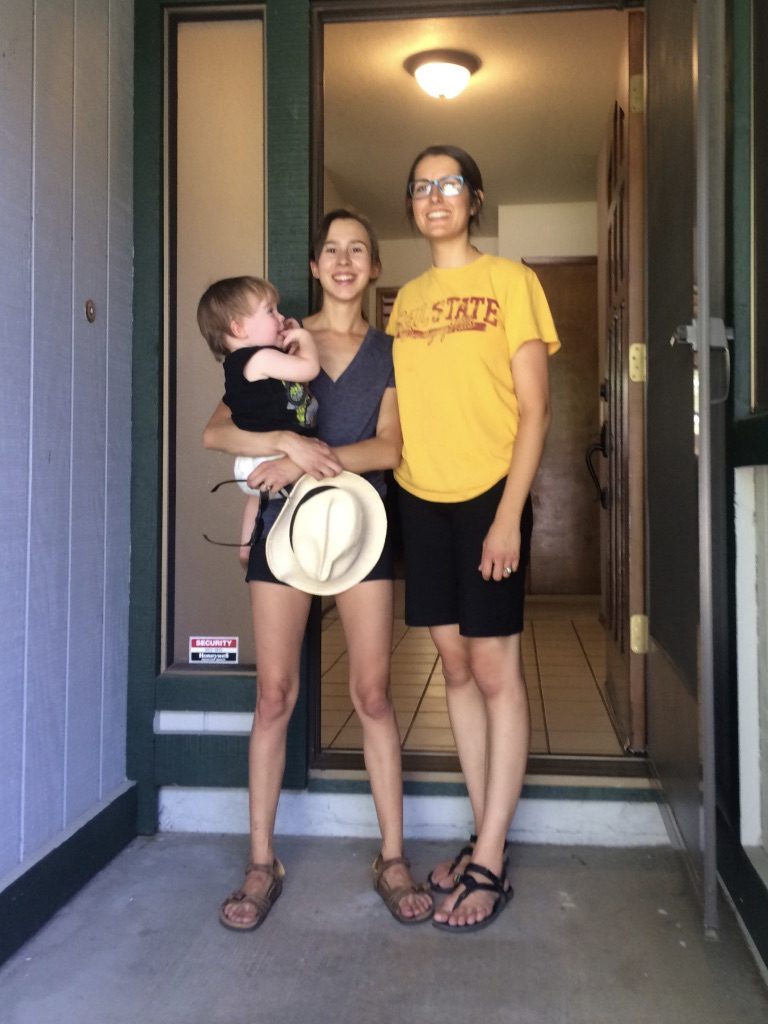
My Healing
Now for the good stuff! Suddenly a fire was ignited inside of me. I would not settle for this. I would not be told what I could and could not do, and I WOULD NOT STOP. My life was changed in a moment, all because I now believed I could do it.
It took over a year, but I weaned myself off arch support and cushioned shoes and made my way incrementally over to barefoot shoes. I haven’t looked back.
During this time I noticed a huge void of information on barefoot shoes, which is why I started this barefoot shoe blog! It is now the top source for all things natural footwear, so be sure poke around if you’re looking for shoes. I recommend starting here.
But there was a lot of work to do before I would start seeing the benefits. Here are the things I changed so I could get my life back.
Better Shoes
I immediately started looking for shoes with a wide anatomical toe box (but not a barefoot shoe). I was able to find some Altras at my local running shoe store, and they were like heaven on my feet. My poor big toe that had been through so much could finally lie straight inside a shoe!
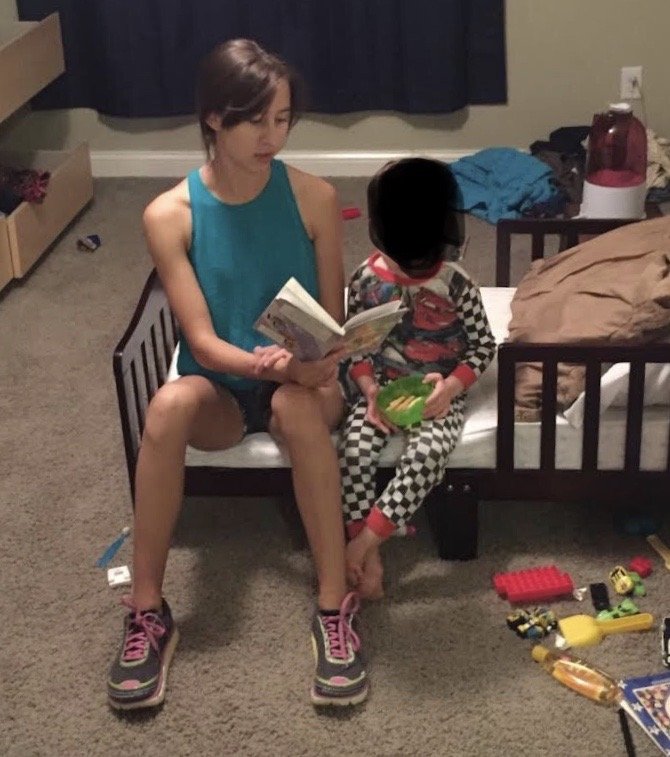
I swapped between Altra’s and Birkenstocks for several months to manage the pain, while I prepared my body to move to a more minimal shoe (more on that in the next section). After several months I got my first true barefoot shoe, but still used a supportive insole in them for a while as my feet got stronger.
I learned along the way that it’s a good idea to keep a hold of a few comfort shoes for when you have bad days or get injured, but boy is it amazing how feet can adapt. After decades in orthotics I have now been without arch support in my shoe for 7 years. I am comfortable in minimalist shoes and even being barefoot the vast majority of the time! You can see here how much my feet have changed over the years – they are stronger and more resilient than ever before. And barefoot shoes allow me to foster that capability.
Better Foot Function
While shoes are an important part of the conversation (unless you don’t wear shoes), they are only one piece of the puzzle. For myself and many others, improving your foot health requires some additional work. So while I was investigating shoes I also began incorporating these foundational foot exercises into my weekly routine so that I could comfortably walk and stand without the ultra supportive shoes.
The biggest takeaway for me here was that in order to build strength you have to intentionally load the tissues. Feet that are stuffed in rigid supportive shoes don’t have to work – and that leads to atrophy. So I began to think about rehabilitating my feet the same way you would rehab an injured shoulder or knee. It was time for my feet to go to the gym!

Better Whole Body Function
Feet are the foundation of our bodies and affect everything all the way up to our heads, but it’s also true that the rest of the body affects the feet. So it’s important to build strong stable joints throughout the entire body. For me, the most useful tools to that end have been the following:
- Walking more – I was only walking about 1,000 steps a day when I started this journey. Increasing that to 5-10K was a huge achievement for me!
- Physical therapy – they can help you spot treat trouble areas!
- Pilates – this exercise modality has been life changing for me
- Daily spinal/joint care – I don’t follow a specific routine, but I make sure to take my joints through their ranges of motion as much as possible so I don’t get stiff. Some people love CARS for this, and I also enjoy a dynamic living space to keep me moving.
I had to start out very slow, but I worked hard and within a couple months I noticed that many things in my life were getting easier as I became stronger. I could stand for longer periods of time, my knees weren’t bugging me, and I had more energy.
My feet also started changing. My arch lifted up off the ground and my toes began to spread as my hips got stronger. I learned the value of pushing myself to the point where my body built muscle, but not to the point were I was inflamed. I looked after my body, resting when I needed and pushing myself once I had recovered. After a lifetime of being sedentary I had somehow become one of “those” people. You know, the ones who actually like to exercise.
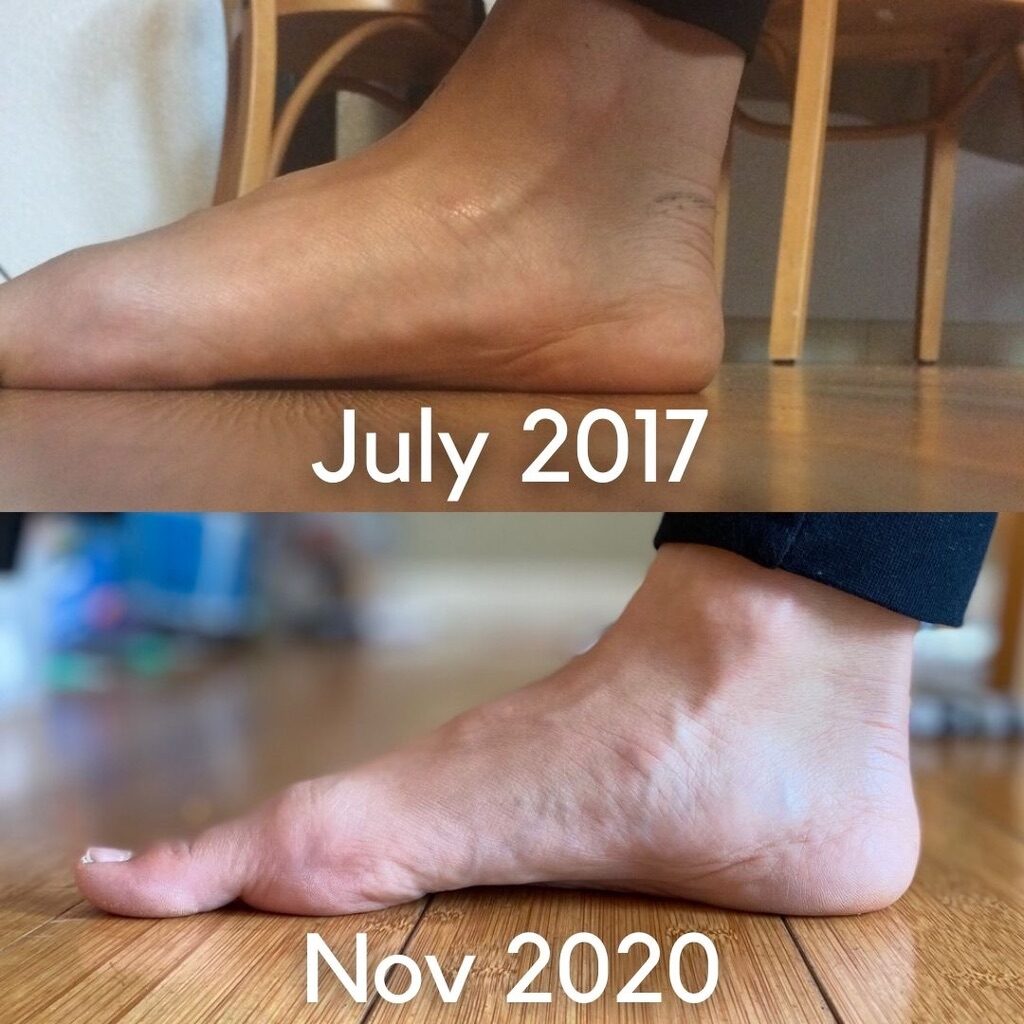
Consulting With Professionals
In addition to seeing a physical therapist, I also greatly benefited from doing a few virtual consultations with Gait Happens in 2020. They helped me identify some core/pelvic floor issues that were getting in the way of my progress. This is common, especially after pregnancies.
And another useful course I took was the Whealth Hypermobility Course (you can use code ANYASREVIEWS for $200 off).
While everyone will benefit from moving and strengthening, hypermobile folks ESPECIALLY need to tend to their joints to keep them stable. As I got stronger my posture naturally improved along with it and everything about life got easier.


Other Lifestyle Optimizations
I also simply can’t neglect to share that changing my lifestyle as a whole has had a huge impact on my pain and mobility.
Getting better sleep, eating a nutrient dense diet (limiting processed foods & refined sugar), and going outside daily have all been major pillars in my recovery process. And of course, the nebulous advice to “manage stress,” which for me has looked like breathwork/meditation (I like boxed breathing), nurturing important relationships, living authentically & honestly, and minimizing contact with toxic people/spaces.
It’s hard to quantify how much all these things have affected the physical pain I experience, but I would guess it accounts for nearly half of my progress!
Takeaways
I still have injury and pain show up occasionally – that is a part of life. But I have learned how to deal with it in a sustainable way. I have no doubt that I will continue to see results as time passes, because bodies are amazing that way! While it might be disappointing that there are no silver bullets, the good news is that even small changes can add up to huge results over time.
I know many of you are going through the same quest for answers right now. So I’m inviting you to join me on this journey toward long term foot health. Because that means freedom in your life to do the things you love!
Besides a whole host of resources that will always be available to you on this blog, you also can get weekly news and tips in your inbox by subscribing to the Barefoot Shoe Digest.
And you can download this special barefoot shoe workshop and resources that I created with movement expert Petra Fisher to help you on your way.
This is my story, not medical advice. You should always check with a doctor if your pain is persistent or unexplained.
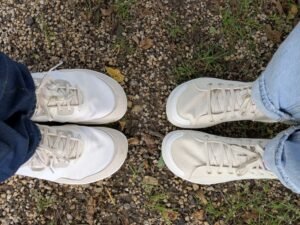
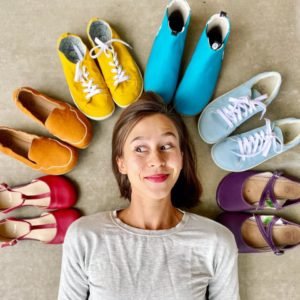

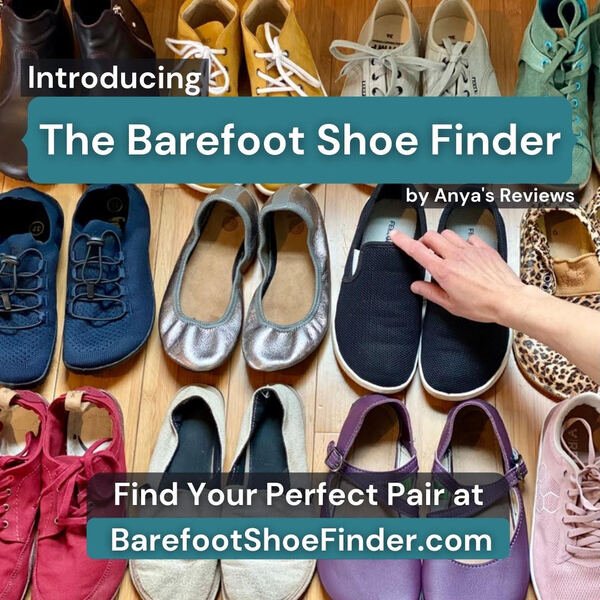
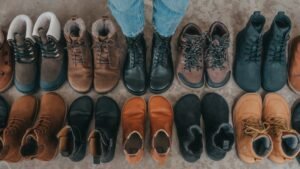
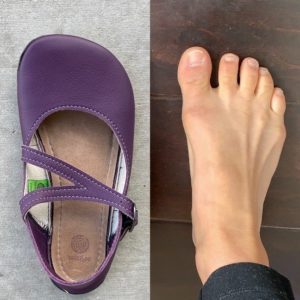


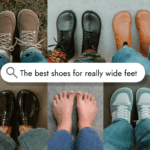

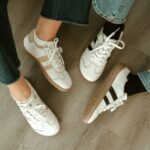

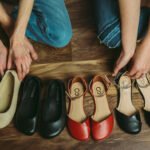
47 thoughts on “My Journey to Strong Feet & Barefoot Shoes”
I noticed your lateral Malleous is a bit bigger, do you know what that’s from? I have it too, (after a couple sprained ankles awhile ago, and one recently) I was just worried about mine. It did swell a bit but since has gone down to look like yours, and was just curious about it.
TIA
I did have an ankle sprain almost 20 years ago that caused me trouble for many years. It might have caused the area to get bigger. Otherwise, I think it’s just how I’m built. Best thing to do is rehab the area so it’s not being stressed.
Thank you for sharing this comprehensive version of your story. I had no idea that you were dx with hallux limitus. It’s encouraging that through all of your hard work and using resources, that you’ve been able to address it. Thanks for all you do to help all of us.
Hi Anya, thank you so much for sharing your story and exercises, I’m impressed by your perseverance. I also developed hallux limitus when I was pregnant with my second one and got prescribed orthotics at age 30. I walked in them 3 times and decided that was not for me and after some research landed on barefoot shoes. Two years later I’m fully transitioned into barefoot shoes, and also started running longer distances again. Unfortunately my hallux limitus is structural instead of functional. I’m sure this is caused by walking on heels for over 10 years. On the fortunate side I hardly experience any pain during normal walking and shorter runs since strengthening my feet by walking in barefoot shoes and doing exercises, but I get so annoyed that I can’t move my left big too much. Hopefully the exercises will help somewhat in regaining mobility there.
I hope so too! Sometimes you can really improve that mobility with effort. Banded toe raises are also really helpful. Best of luck to you, and glad you found your way here!
Hi Anya. I am reading you from Spain, where there isn’t much information about barefoot shoes. I’ve got very rigid cavus foot, I am trying orthotics inside barefoot shoes, but I need a brand with enough space to introduce orthotics in it. Could you help me? Thanks!!!
Hi! I would look for shoes that are high volume, or that have a removable insole. Barebarics, some Be Lenka models, Shapen Ivy. There are quite a lot! You can use this article to find options that are high volume:
https://anyasreviews.com/best-barefoot-shoes-foot-type/
Hi Anya, I just read this after perusing your site for the last couple of years. Very glad to know you’ve been able to heal! I’m still looking for barefoot shoe brands that cater more to wide feet. Bohempia has been a Godsend. I dream of a combat boot, and other style options-still searching. Perhaps you can offer feedback to companies to offer wide width barefoot styles?
I try to! I also have an article all about combat boot styles that you might like:
https://anyasreviews.com/best-zero-drop-barefoot-combat-boots/
Hi Anya!
Just curious to know what type/severity of knee pain that you had? I only recently started having knee stiffness in my right knee (started in April)…. it comes and goes, but flares up when my knee is bent for a long period of time, so extending it helps. I’m baffled though as to what the cause could be (I’ve seen some stuff online about how weak hips may cause knee pain, but IDK).
Thanks!
Mine was in the front above and in the knee cap, and it still flares up occasionally. I have to keep my hips well lubricated and I roll out my quads and IT band on a foam roller to keep it under control. Joe LaVacca has some great stuff on hips on his social media, I use it often!
This sounds like me…. I’m at a point where things are managed and maintained. I was always super active however, but I became used to moving in ways that let muscles overcompensate because others weren’t firing. I was fine until I hit 30. And then I collected a chronic injury each year for the next few years. I’ve worked with many different people. Some were amazing. (Some were less amazing, offering advice like, ‘Don’t lift weights/get orthotics and rigid shoes/you just need to stretch.’) I also found an amazing pilates teacher who is well into her 50s.
My glutes seem to fire a lot more these days. The neck and knee problems don’t plague me anymore. But I still have issues and I can feel I’m very wonky in my hips.
I’m going to have session with Gait Happens – hopefully in the new year when I should get an extra freelance contract come through. I’ve spent so much on fixing myself in the last 5 years. But I’m very certain the GH team will be an excellent next step, especially after learning that you have also had sessions with them 🙂
Hi Anya,
I have a foot saga too (hahaha)! In fact I was thinking about starting a blog and then I found you. Which is really really cool because that means my idea wasn’t a bad one to begin with but I have so many ideas why duplicate what you have already done (and so well too!) Good on you and on to the next idea for me.
My point in writing you is to seek out advice because you have contact with so many people and their stories / medical histories.
AN INCOMPLETE FEET MEDICAL HISTORY FOR THE SAKE OF BREVITY:
After a prolonged recovery of a R-ankle sprain, my podiatrist says that I must wear arch supports forever now that my R-arch completely collapsed which led to acute plantar fasciitis. Of course part of the treatments that I was given no doubt contributed to that collapse. However, it isn’t clear if there are some underlying autoimmune/ soft tissue issues. I tested negative on all the inflammation markers but US Rheumatology is really behind the curve on inflammation marker testing (50% of all people who test negative have false negatives and 85% of people who test positive are false positive) for autoimmune disease. And yet Rheumatologists carry on as if inflammation marker testing is a gold standard.
HOW I FOUND YOU:
Anyway, After a deluge drenched my athletic shoes and in an attempt to dry them quickly I accidentally burned them on the radiator. This led me to looking for replacements and questioning if I couldn’t find something better, then I stumbled on the concept of heel drop, which led me to look into what my recently burned athletic shoes were. I discovered that they had a 10mm heel drop. I didn’t sign up for that. I bought extra supportive shoes thinking that it would help stabilize my ankles but I didn’t realize there was a hidden heel. The thing is, never in my life had I ever used a super supportive tennise shoe. They were always old school models with low heal drops. In addition, I was putting an arch support into a 10mm heeled athletic shoe and arch supports are meant to be worn in flat shoes, nothing with a heel rise. This isn’t something that my podiatrist seems to be clued into. After researching the demise of foot binding visa-vi post-moccasin footwear, I realized I had some serious damage to undo, and then somehow I stumbled onto your amazing website. What a blessing in disguise, the burning of my top-of-the-line athletic shoes!
IN SUMMARY:
I don’t believe my podiatrist regarding the fact that I will have to wear arch supports the rest of my life or else my arches will continue to collapse (but not necessarily) along with my knees and other joints. I do; however, need to heal my soft tissues and an arch support relieves the pressure on the soft tissues aggravated by the plantar fasciitis. I see now the importance of 0-drop heels. I see that my transition will be very very slow.
MY GAME PLAN:
Currently, I wear arch supports in barefoot shoes. Soon I will add Correct Toes toe spacers. Currently, I practice the feet/toe exercises as described on your website. Getting the big toes up and the other eight down is soooo difficult: I practice 3X a day and still I’m lousy at it. I can’t will the motor units to direct the movement in that direction, yet. “Yet” being the operative word. For the record, with the big toes down and eight toes up, I’m an A+ player at that game. Currently I walk around the house barefoot for a few minutes at time before the plantar pain starts up. I also practice yoga barefoot on a 6mm mat. As my feet and ankles strengthen I will spend time out and about without arch supports and slowly build up time without them. I will eventually use a Naboso mat in my house. When I transition out of arch supports, I will transition into a heel cup, and then out of the heel cup eventually. I will always do maintenance feet exercises. If I have soft tissue issues in the future I can always back up a step or two for a while, but continue to wear barefoot shoes. Baby steps!
1) What do you think of my game plan?
2) Do you know of anyone who fully recovered from plantar fasciitis caused by collapsed arches and what their healing trajectory was like and/or how they went about it?
In gratitude,
Lisa
Hi Lisa! That sounds like a thoughtful transition you have planned out! I do know of some people who healed fully from PF, but I don’t know the details unfortunately. However, taking a stepwise approach to all this seems like a reasonable course of action. You might as well try to improve your foot function and see where it takes you!
I’ve been struggling also with Hallux Limitus, since 2014. Unfortunately I also started out treating it by wearing stiff shoes and orthotics. I did also work on increasing mobilization with stretches etc, but my R toe has developed the bony growth on top which apparently will not go away without surgery. I’m now having treatment with a Gonstead chiro, and my toe mobility has improved a lot! I walk outside and inside barefoot whenever possible, and have plans to transition to barefoot shoes. I’m curious if you also had the bony growth on your big toe, and if so did it go away on it’s own, or were you able to improve your feet before it got to that point? Thanks!
I did get a thickening of my joint capsule and the bone, so the whole area is bigger than on my left foot. It does irritate me occasionally, but as long as I continue the lifestyle and check in with that foot every so often (sometimes my right big toe needs some extra massage and stretching) I am not hindered by it. My right foot is definitely my pickier foot when it comes to shoes, which can be annoying. But thankfully there are lots of wide toe box shoe options.
Hi Anya, thank you for sharing your story. I am moving through some things with my body and started pilates a few months ago to strengthen my body. I would also like to strengthen my arches and no longer need the use of orthotics. I am curious about your pilates experience. Did you do a combination of mat and reformer work? And what exercises did you find best to help build your arches? In gratitude.
Hi Christina – you can find the foundational exercises I used in this Foot Exercises article. There is one more important one that I need to add to that article that you can find explained in this social media post. Regarding Pilates, I started primarily with mat pilates which was so good for my overall strength. Then I added in reformer which does a lot more direct strengthening for your feet and ankles. So if you want to focus on improving your foot function I would recommend Reformer or a combo of Reformer and Mat.